Stay connected
Subscribe to our Inside WEX blog and follow us on social media for the insider view on everything WEX, from payments innovation to what it means to be a WEXer.

Over the course of 15 difficult weeks between mid-March and the end of June 2020, Americans filed nearly 49 million new claims for unemployment benefits. The unemployment rate has improved since that precipitous drop, but the situation remains critical, with half of those who lost a job due to the coronavirus outbreak still out of work. Since the beginning of the pandemic, companies across the U.S. have reduced the size of their workforce, fundamentally altering the way many people work.
At the same time, accelerating already existent trends, there has been a huge increase in the use of digital payment methods. People don’t want to touch money and sending checks by mail has become less dependable with an embattled Postal Service, so digital transfers have filled the gap. Dan Schulman, the CEO of PayPal, sees this change as a sign that digital payments are shifting from “being a nice-to-have capability to a must-have essential service.”
Along with countless other transformations made necessary by the pandemic, this rapid evolution in digital innovation has occurred in a shorter timespan than we could have anticipated a year ago. With a reduction in the U.S. workforce and a majority of the still-employed working remotely, companies have needed to adapt their old-fashioned and labor-intensive B2B payment processes to digital processes. For many companies, this move to digital includes upgrading payment processes away from manual systems involving paper and people toward automated, digital payment processes that rely on fewer workers.
To gauge the role of payments innovation in companies’ response to COVID-19, WEX worked with (E) BrandConnect, a commercial arm of The Economist Group, to survey several hundred executives in the financial services sector in order to investigate what exactly was happening to payments. They found that digital payments had reached a tipping point: “The findings show both opportunity and peril around payments, highlighting a stark reality: financial services companies that don’t adapt may not survive.”
In this first piece of a five-part series, we’ll delve into the findings of their research and decode the opportunity and peril highlighted in the report with five key ways to stay ahead of this B2B digital payments evolution curve.
The majority of companies surveyed by the Economist were already on the path of digital transformation before the start of the pandemic. They were impacted by COVID but 51% describe that impact as moderate, attributable in part to their already having started the transformation to digital before March of last year. These companies were better equipped to handle the disruption than companies that had not yet gone digital.
More than 7 in 10 surveyed described their companies as more digitally agile and technologically innovative than they had been pre-pandemic, and more than half of respondents said their companies are stronger than they were before COVID-19 began to spread.
The takeaway: don’t hesitate a moment longer to put your company on the path to digital payments. As COVID continues to ravage our economy, developing your company’s digital payment technology will be a crucial key to survival.
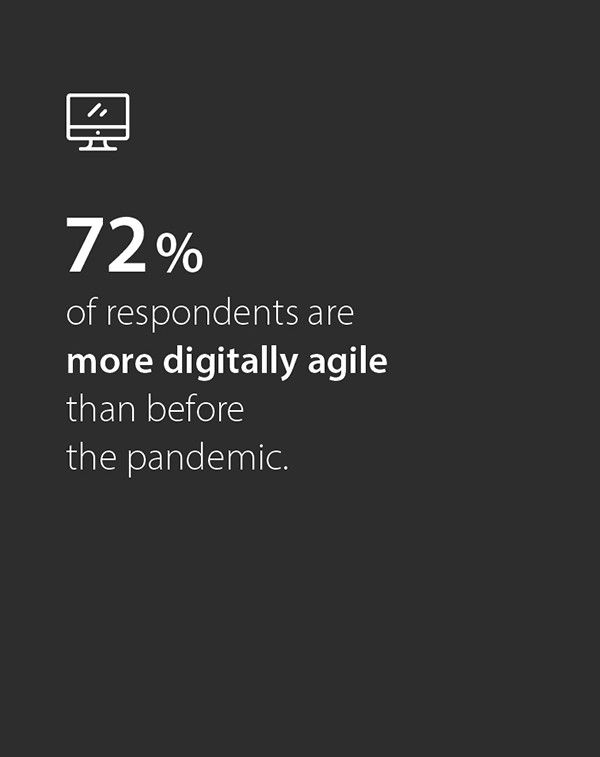
72% Of Respondents Are More Digitally Agile Than Before The Pandemic.
We are amidst the second wave of the COVID-19 crisis and while vaccinations are becoming more readily available, we don’t yet have a clear picture of when things will start to return to normal. In fact, it’s likely there will be a tightening of restrictions in the months to come as cases continue to climb across the nation, intensified by the new, fast-moving strain of the virus. Companies should continue to evolve best business practices, which includes reckoning with the continued disruption of former payment protocols.
Respondents to the Economist study reported that “modernizing technology/platforms for [their] customers” was the number one priority in the coming months, suggesting that companies will continue to evolve their payments practices as technologies evolve. Payments technologies are continuing to develop and companies who want to provide the best service to their customers need to stay on top of these changes in order to remain competitive.
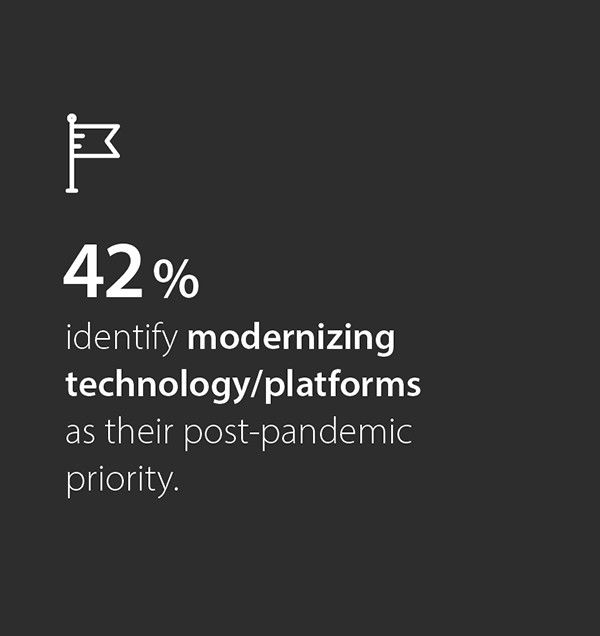
42% Identify Modernizing Technology/Platforms As Their Post-Pandemic Priority.
When tens of thousands of U.S. workers moved to remote work, one resultant revelation was an innovation opportunity for many companies still using archaic paper- and human-based payments processes. The vast majority of survey respondents took action to disrupt these old practices and innovate mid-pandemic.
Many companies that were surveyed leveraged payments technologies to innovate new sources of business value. Seventy-four percent of respondents reported that they are well down the path to evolving their B2B payments solutions, and in the process, are providing new opportunities for businesses to improve the bottom line for their customers.
The top priorities respondents are pursuing:
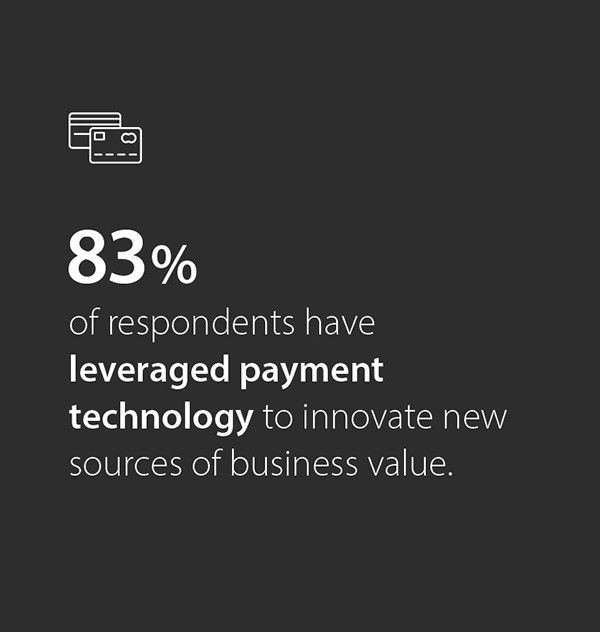
83% Of Respondents Have Leveraged Payment Technology To Innovate New Sources Of Business Value.
Eighty-three percent of respondents are developing new sources of value through payments technology, staying ahead of the payments technology disruption, and as a result enjoying a vastly more satisfied population of customers.
Accenture predicts 420 billion spending transactions worth $7 trillion will shift from cash to cards and digital payments by 2023 and increase to $48 trillion by 2030. Being a part of that shift will provide companies with a competitive advantage. Seventy-five percent of surveyed bank executives say that the pandemic has increased the urgency of their plans to modernize payment systems.
Respondents to the Economist survey believe that transforming their supplier payments solution will offer their customers more value. This will come in the form of:
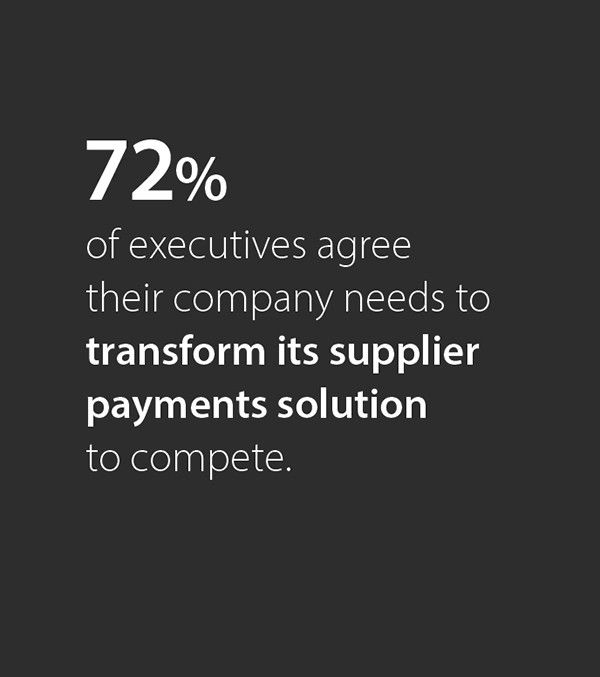
72% Of Executives Agree Their Company Needs To Transform Its Supplier Payments Solution To Compete.
The Economist study focused on three sectors: financial services, technology, and fintech. Each of these sectors had different views on what to prioritize in payments innovation.
Technology companies see the greatest value in:
Fintechs are focused on:
For any company looking to stay ahead of the curve of this digital payments transformation, their focus should be on what their customers (and their customers’ customers) need. This may require investing in focus surveys, and most companies will benefit from a deeper and closer look at the new needs and priorities of their customers. The more companies can communicate with customers as they develop payment technologies that best work for them, the happier customers will be with the outcome.
No single organization can drive transformation in isolation from the other businesses with which it engages–payments are by their nature dependent on agreements between multiple parties. It is in this connective system of payments, where the global economy’s value chains are forever intertwined, that the digital payments transformation will sustain change far into the future. Companies that seek to compete in a post-pandemic world will want to embrace the invaluable new technologies at hand and watch as the positive results accumulate.
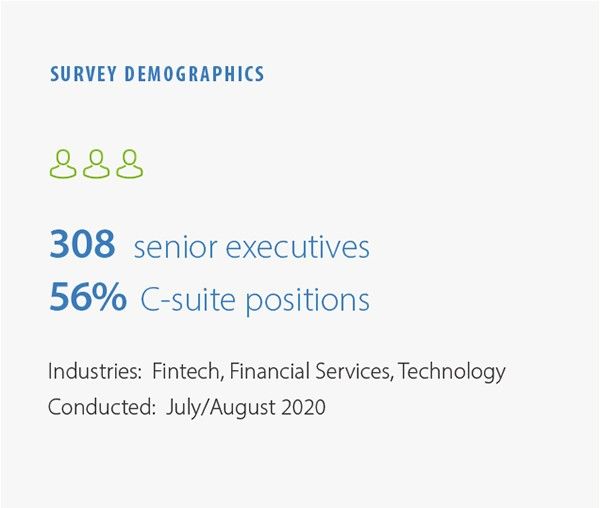
Survey Demographics
Click here to learn more about how WEX payment solutions can be tailored to your business, so you can operate easier and faster while creating lasting growth and success.
Click here to download and read the full Economist white paper, “The Digital Payments Tipping Point.”
Resources:
Commonwealth Fund
Pew Research Center
CNBC
Bain Capital Management
Business Wire
Forbes
Harvard Business Review
New York Times
Subscribe to our Inside WEX blog and follow us on social media for the insider view on everything WEX, from payments innovation to what it means to be a WEXer.